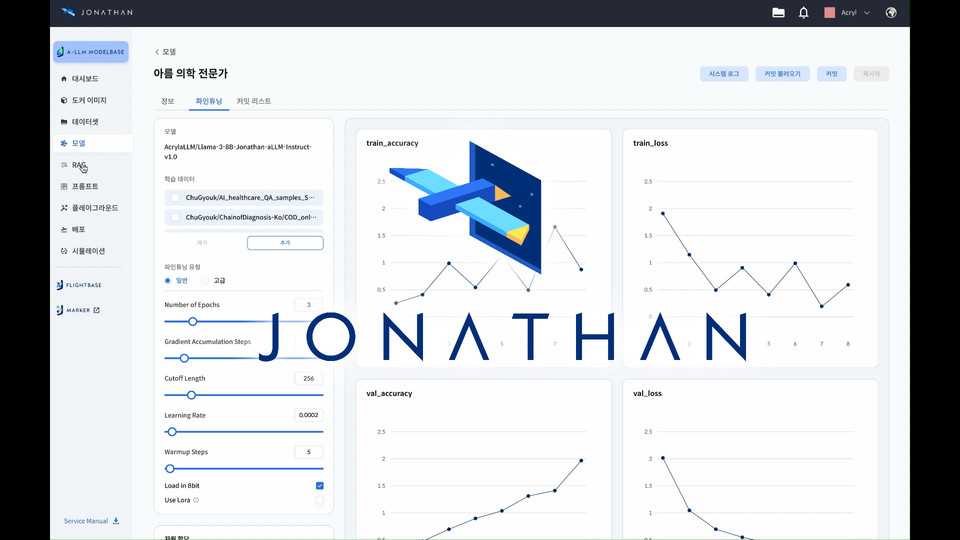
On the 26th, AI specialist company ACRYL (CEO Jin Park) attracted attention from the industry by unveiling the latest LLM and LLMOps solutions linked to its integrated AI platform Jonathan at the Gyeongbuk Super-Large AI Industry Activation Forum.
Jonathan is an integrated AI platform that effectively supports the entire process of introducing artificial intelligence (AI). At this forum, the company unveiled the newly added high-performance large-scale language model 'A-LLM' and the LLMOps solution 'A-LLM Modelbase' based on it.
In August, A-LLM was recognized for its technology and performance as a Korean-specialized LLM by taking first place in the open source category of the 'Tiger Leaderboard' operated by Weight & Bias (W&B).
A-LLM Modelbase is a solution designed to allow users to develop, distribute, and operate customized super-large AI models using their own data, and provides an environment where users can freely bring in and utilize various LLM foundation models provided by open source communities such as A-LLM as well as Hugging Face.
In addition, it supports easy construction of industry-specific Q&A systems through functions such as GUI-based fine-tuning, Retrieval-Augmented Generation (RAG) system development, and prompt design. Arum Modelbase efficiently utilizes large-scale GPU resources to reduce infrastructure operation costs and provides optimized solutions for domestic companies and institutions through integration with Arum, a high-performance Korean LLM.
An official from ACRYL said, “ACRYL, which has supported the development and operation of machine learning and deep learning models through Jonathan-based MLOps services, has now provided an environment for integrated management of LLMs with the launch of Arum and Arum Modelbase,” and “ACRYL will successfully continue its business expansion into the LLM field through this.”
Meanwhile, Arum was developed with the support of the “Development of Agent Platform Technology Capable of Individuality Formation” project promoted by the Ministry of Science and ICT and the Institute of Information and Communications Technology Planning and Evaluation (IITP). This project is part of the Ministry of Science and ICT’s “Development of Core Source Technologies for Human-Centered Artificial Intelligence” project, and aims to research giving human individuality to artificial intelligence (AI). Currently, detailed information on the main achievements of this project, including Arum, is open source (downloaded).